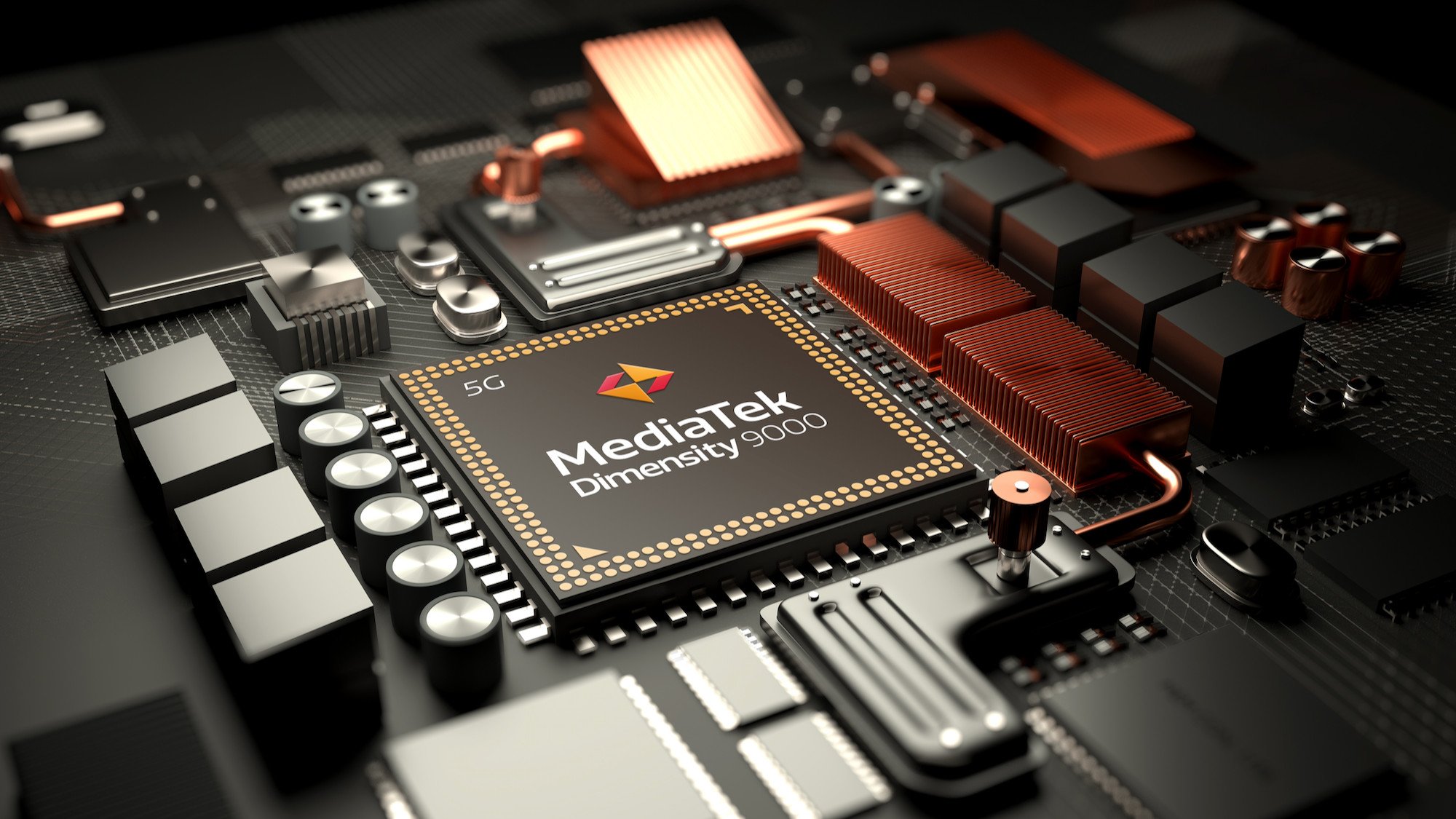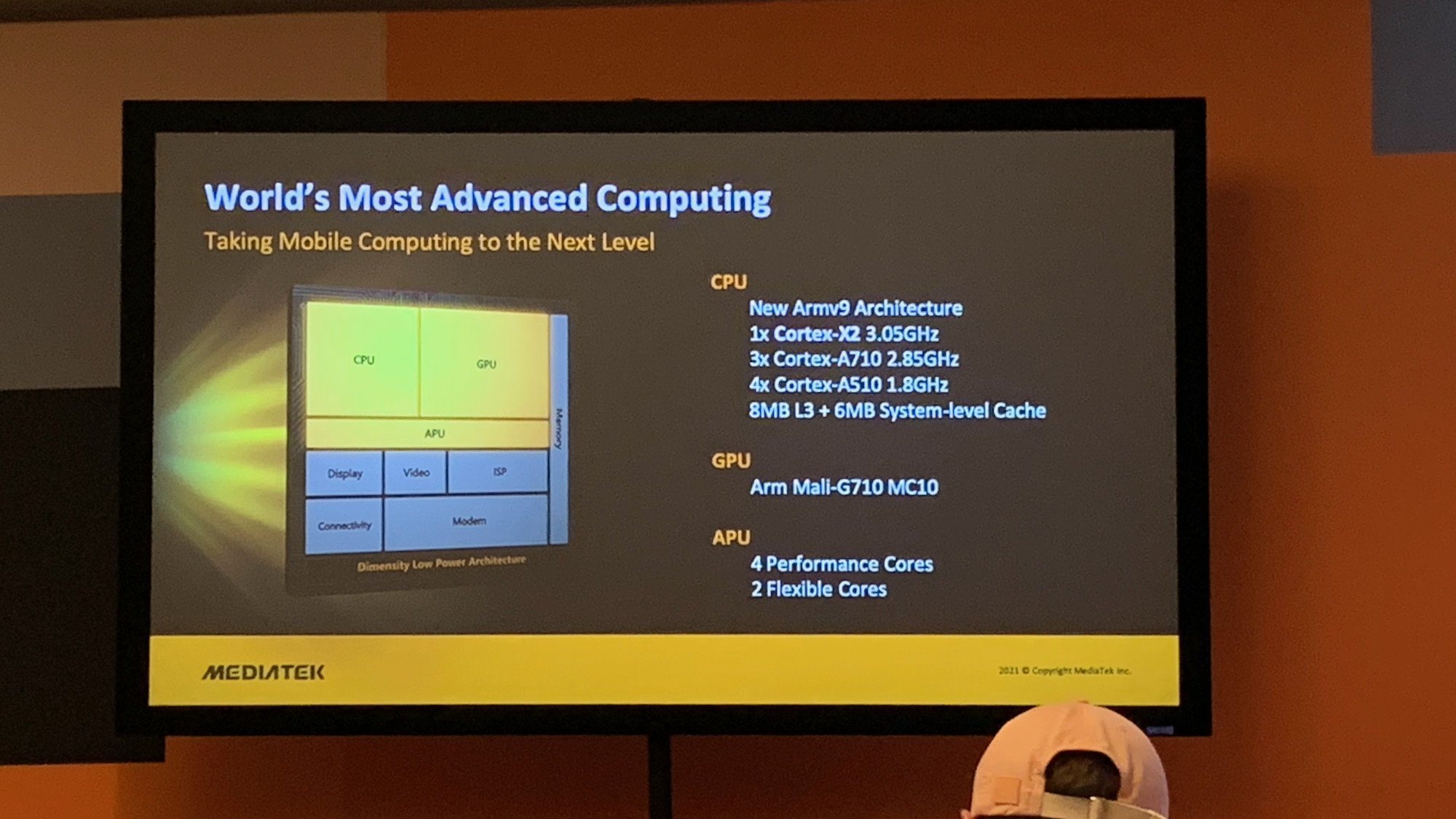MediaTek calls out Qualcomm with new Dimensity 9000 flagship chipset
Dimensity 9000 vs. Snapdragon 898 will be a battle worth watching.
What you need to know- The MediaTek Dimensity 9000 is a 4nm chip with a next-gen Arm Cortex-X2 core.
- MediaTek claims it beats the Bionic A15 for speed and Google Tensor for AI performance.
- It will enable up to 180Hz refresh rates, ray tracing, and 320MP cameras.
- Other new standards include Bluetooth 5.3, WiFi 6E 2x2, and improved sub-6 5G speeds.
Last year, MediaTek dominated the mid-range phone market, powering a wide international range of affordable phones. But it's never had as much presence in North America, where Qualcomm's flagship chips take the vast majority of the market. Now, MediaTek plans to make inroads with the Dimensity 9000, a 4nm SoC that could compete with the Snapdragon 898.
On Thursday, MediaTek announced the components behind the Dimensity 9000: One Arm Cortex-X2 (3.05GHz), three Cortex-A710 (2.85GHz), four Arm Cortex-A510 (1.8GHz), a Arm Mali-G710 MC10 graphics processor, and an AI processing unit with four processing cores and two flexible cores.
It's the same Arm v9 architecture and cores that the Snapdragon 898 is rumored to use, though Qualcomm's chip may clock at different speeds. The Cortex-X2 supposedly provides 35% better performance and 37% better power efficiency over the X1s found in 2021 flagships, while the A710 could provide a 10% performance boost and 30% better energy efficiency compared to the Cortex-A78.
Just as important, the 510 cores may boost AI machine learning (ML) performance and efficiency by 400% over the A55, which could help these flagships compete with Google Tensor and the Pixel 6 for ML tools - MediaTek specifically said the Dimensity 9000 beats Tensor for AI speeds by 16%.
Yen-Chi Lee, Deputy General Manager of Wireless Communcations at MediaTek, claims that the Dimensity 9000 has equal multi-core performance to the iPhone 13's A15 Bionic in Geekbench performance, while trumping all current 2021 Android flagships.
Similarly, he claimed the Dimensity 9000 maintains a faster FPS in Genshin Impact over time than Apple's phones, and that it's the first SoC to reach a score of 1,000,000 in an AnTuTu benchmark test.
MediaTek described some of the new features enabled by the Dimensity 9000, which could indicate what features the best Android phones of 2022 could have. For instance, the Dimensity 9000 can enable 180Hz refresh rates on FHD displays or 144Hz on QHD displays. We're very curious to see whether any flagships take advantage of this next year, particularly gaming phones; it's also fair to be concerned that such fast refresh rates would quickly decimate a smartphone battery.
The Mali-G710 GPU also enables ray tracing. Realistic lighting effects on phones would be pretty exciting, especially for gamers who regularly use Xbox Cloud Gaming to play games that support it.
The MediaTek Dimensity 9000 will also unlock camera support up to 320MP, plus simultaneous 4K video recording shot with three lenses at once. At the moment, we know of Samsung's powerful 200MP sensor, but even better tech could be on the way. And after Apple impressed with its new Cinematic Mode on the iPhone 13, other phone makers may up their video recording game next year.
Among the other new features enabled include Bluetooth 5.3, Wi-Fi 6E 2x2, and a new 5G smartphone modem that MediaTek says will enable "3CC Carrier Aggregation (300MHz) 7Gbps downlink" for improved sub-6GHz speeds.
Now we just have to wait and see which phones will use the Dimensity 9000, and where. Lee and MediaTek Corporate VP JC Hsu said they expect to see the first Dimensity 9000 phone by Q1 2022, but couldn't say if the chip would make it to the United States. Given MediaTek's popularity in Europe, it may be more likely it'll appear there first.
We're also curious to see how this chip competes against the Snapdragon 898 chip and A16 Bionic. So far, the Samsung Galaxy S22, Motorola Edge 30, and Xiaomi 12 are all expected to use the 898.


